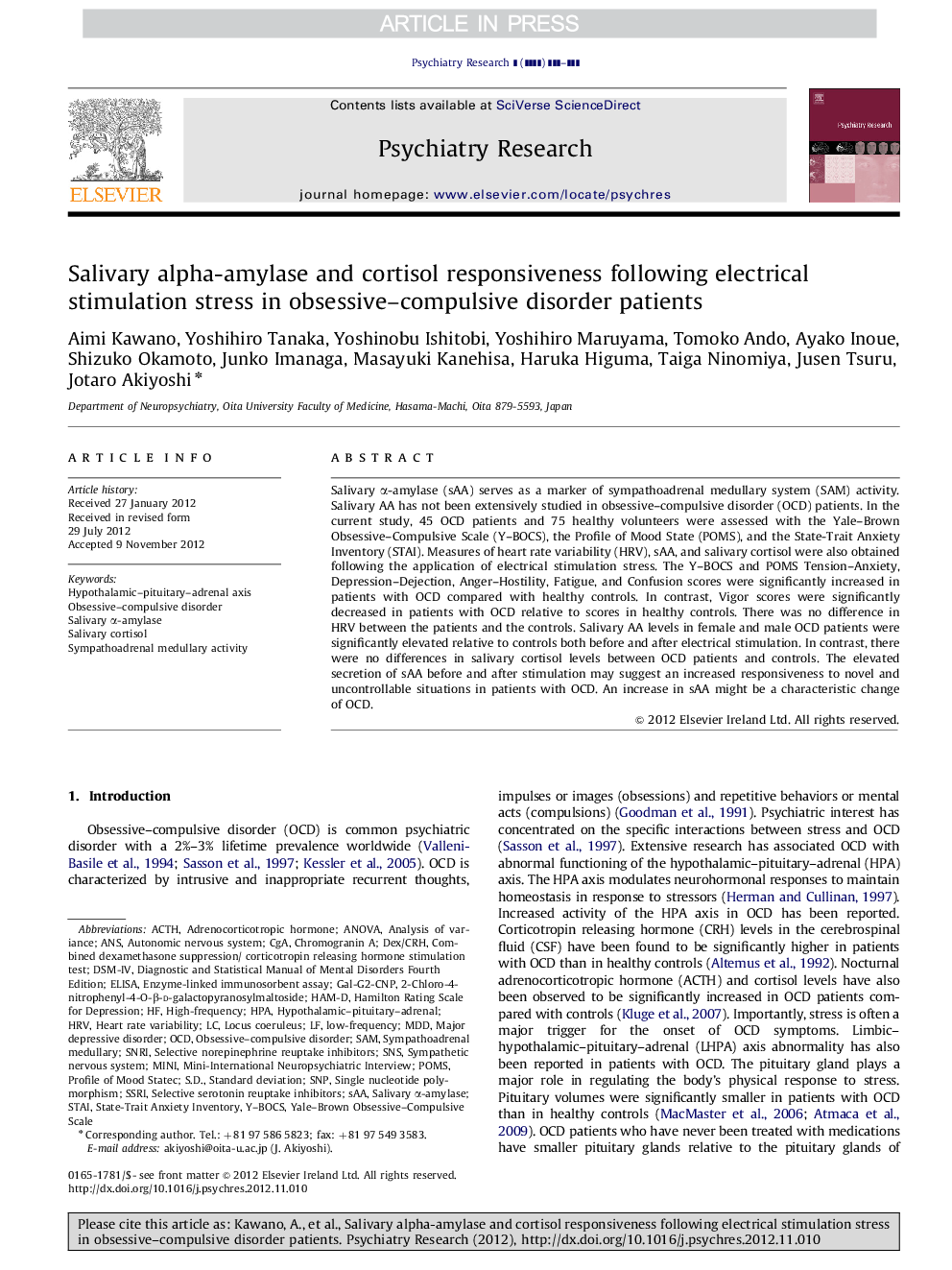| Article ID | Journal | Published Year | Pages | File Type |
|---|---|---|---|---|
| 10305032 | Psychiatry Research | 2013 | 6 Pages |
Abstract
Salivary α-amylase (sAA) serves as a marker of sympathoadrenal medullary system (SAM) activity. Salivary AA has not been extensively studied in obsessive-compulsive disorder (OCD) patients. In the current study, 45 OCD patients and 75 healthy volunteers were assessed with the Yale-Brown Obsessive-Compulsive Scale (Y-BOCS), the Profile of Mood State (POMS), and the State-Trait Anxiety Inventory (STAI). Measures of heart rate variability (HRV), sAA, and salivary cortisol were also obtained following the application of electrical stimulation stress. The Y-BOCS and POMS Tension-Anxiety, Depression-Dejection, Anger-Hostility, Fatigue, and Confusion scores were significantly increased in patients with OCD compared with healthy controls. In contrast, Vigor scores were significantly decreased in patients with OCD relative to scores in healthy controls. There was no difference in HRV between the patients and the controls. Salivary AA levels in female and male OCD patients were significantly elevated relative to controls both before and after electrical stimulation. In contrast, there were no differences in salivary cortisol levels between OCD patients and controls. The elevated secretion of sAA before and after stimulation may suggest an increased responsiveness to novel and uncontrollable situations in patients with OCD. An increase in sAA might be a characteristic change of OCD.
Keywords
selective norepinephrine reuptake inhibitorsHAM-DDSM-IVMDDCGASAMOCDSNSSAASNRIACTHHRVPOMsS.D.salivary α-amylaseMajor depressive disorderObsessive–compulsive disorderstandard deviationanalysis of varianceANOVAELISAEnzyme-linked immunosorbent assayAutonomic nervous systemDiagnostic and Statistical Manual of Mental Disorders Fourth EditionANSsympathetic nervous systemSTAIHigh-frequencyLow-frequencylocus coeruleushypothalamic–pituitary–adrenal axisMini-International Neuropsychiatric InterviewHamilton Rating Scale for Depressionselective serotonin reuptake inhibitorsSSRIHPAMINIheart rate variabilityadrenocorticotropic hormonehypothalamic–pituitary–adrenalSingle nucleotide polymorphismSNPChromogranin ASalivary cortisol
Related Topics
Life Sciences
Neuroscience
Biological Psychiatry
Authors
Aimi Kawano, Yoshihiro Tanaka, Yoshinobu Ishitobi, Yoshihiro Maruyama, Tomoko Ando, Ayako Inoue, Shizuko Okamoto, Junko Imanaga, Masayuki Kanehisa, Haruka Higuma, Taiga Ninomiya, Jusen Tsuru, Jotaro Akiyoshi,
